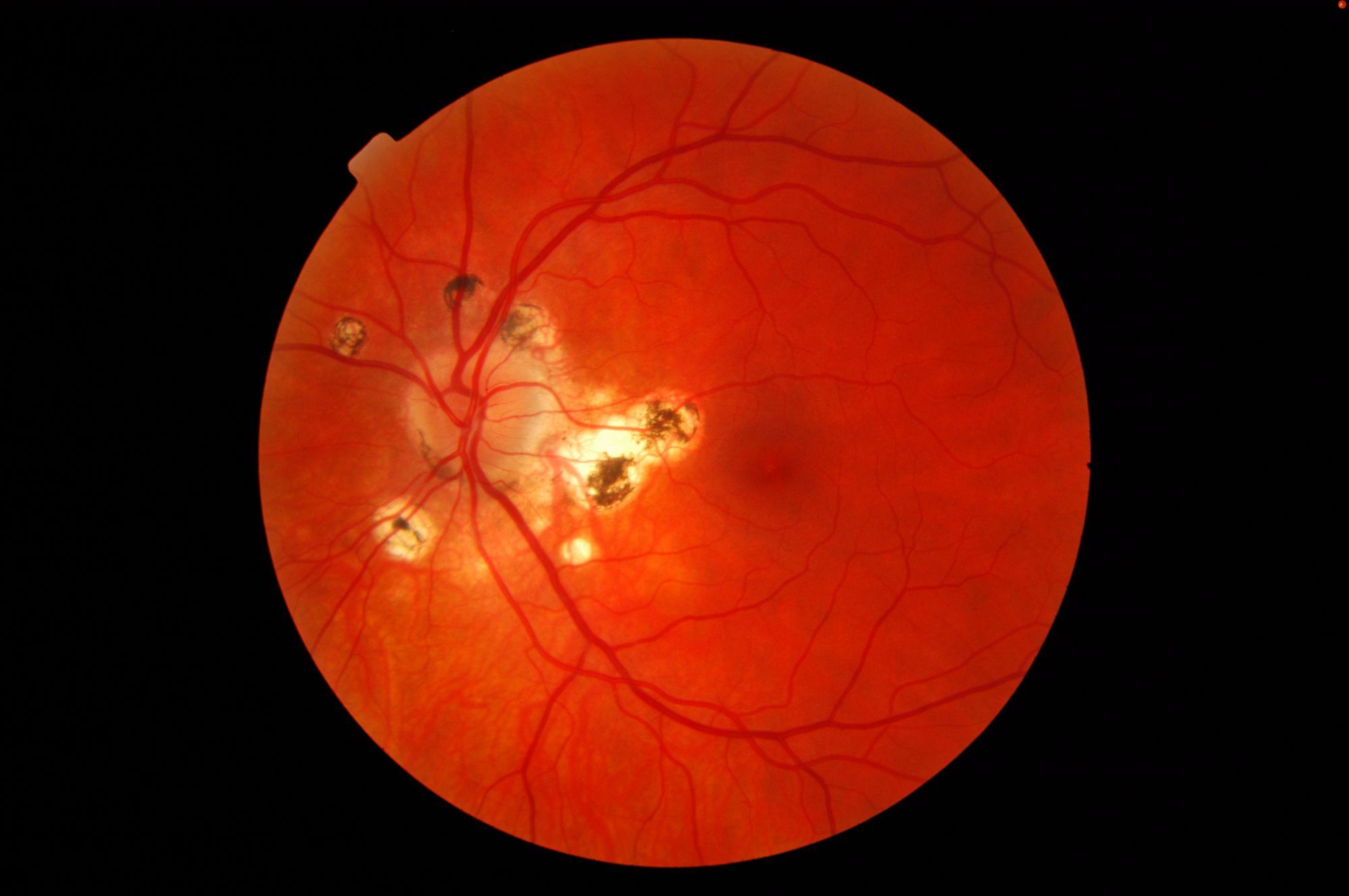
Presumed Ocular Histoplasmosis Syndrome (POHS) is a rare eye condition linked to a fungal infection called Histoplasma capsulatum. This fungus thrives in soil rich with bird or bat droppings, often found in the Ohio and Mississippi River valleys. POHS can lead to vision loss if not detected early. The syndrome primarily affects the retina, causing small scars and abnormal blood vessel growth. Symptoms might include blurred vision, blind spots, or even sudden vision changes. Early diagnosis and treatment are crucial to managing this condition. Understanding POHS helps in recognizing symptoms and seeking timely medical advice. Let's dive into 35 essential facts about Presumed Ocular Histoplasmosis Syndrome to shed light on this condition.
Key Takeaways:
- POHS is a rare eye condition caused by a fungus found in bird and bat droppings. It can lead to vision loss if untreated, so regular eye check-ups are crucial for early detection.
- Living with POHS involves adapting to changes and seeking support. Treatment options include injections, laser therapy, and surgery. Joining support groups and maintaining a healthy lifestyle can improve overall eye health.
What is Presumed Ocular Histoplasmosis Syndrome?
Presumed Ocular Histoplasmosis Syndrome (POHS) is a rare eye condition linked to a fungal infection. It can lead to vision loss if untreated. Here are some intriguing facts about POHS.
-
Fungal Origin: POHS is caused by the fungus Histoplasma capsulatum, commonly found in bird and bat droppings.
-
Geographical Hotspots: The condition is most prevalent in the Ohio and Mississippi River valleys in the United States.
-
Silent Invader: Many people infected with Histoplasma capsulatum show no symptoms, making it hard to detect early.
-
Eye Spots: POHS is characterized by small, white spots on the retina called "histo spots."
-
Vision Threat: These histo spots can lead to choroidal neovascularization, where new blood vessels grow under the retina, causing vision loss.
Symptoms and Diagnosis of POHS
Understanding the symptoms and how POHS is diagnosed can help in early detection and treatment.
-
Symptomless Start: Early stages of POHS often have no symptoms, making regular eye exams crucial.
-
Blurred Vision: As the condition progresses, blurred vision in one or both eyes can occur.
-
Blind Spots: Patients may notice blind spots in their central vision.
-
Distorted Vision: Straight lines may appear wavy or distorted, a condition known as metamorphopsia.
-
Ophthalmoscopy: An eye doctor uses an ophthalmoscope to look for histo spots during an eye exam.
Risk Factors and Prevention
Knowing the risk factors and preventive measures can reduce the chances of developing POHS.
-
Geographical Risk: Living in or visiting areas where Histoplasma capsulatum is common increases risk.
-
Outdoor Activities: Activities like farming, gardening, or spelunking can expose individuals to the fungus.
-
Bird and Bat Exposure: Frequent contact with bird or bat droppings heightens the risk.
-
Protective Gear: Wearing masks and gloves when handling soil or droppings can help prevent infection.
-
Regular Eye Exams: Regular check-ups with an eye specialist can catch POHS early.
Treatment Options for POHS
Various treatments are available to manage POHS and prevent vision loss.
-
Anti-VEGF Therapy: Injections of anti-VEGF drugs can stop the growth of abnormal blood vessels in the eye.
-
Laser Therapy: Laser photocoagulation can seal leaking blood vessels and prevent further damage.
-
Steroid Injections: Steroids can reduce inflammation and swelling in the eye.
-
Photodynamic Therapy: This treatment uses light-activated drugs to destroy abnormal blood vessels.
-
Surgical Options: In severe cases, surgery may be necessary to remove scar tissue or repair the retina.
Living with POHS
Managing life with POHS involves adapting to changes and seeking support.
-
Low Vision Aids: Devices like magnifiers and special glasses can help those with vision loss.
-
Support Groups: Joining a support group can provide emotional and practical assistance.
-
Healthy Lifestyle: Maintaining a healthy diet and avoiding smoking can improve overall eye health.
-
Regular Monitoring: Frequent visits to an eye specialist are essential to monitor the condition.
-
Adaptive Technology: Using technology like screen readers and voice-activated devices can aid daily activities.
Research and Future Directions
Ongoing research aims to improve understanding and treatment of POHS.
-
Genetic Studies: Researchers are exploring genetic factors that may contribute to POHS susceptibility.
-
New Medications: Development of new drugs to treat POHS is an active area of research.
-
Early Detection: Advances in imaging technology may allow for earlier detection of histo spots.
-
Public Awareness: Increasing awareness about POHS can lead to earlier diagnosis and treatment.
-
Clinical Trials: Participation in clinical trials can provide access to cutting-edge treatments.
Interesting Tidbits about POHS
Here are some lesser-known facts that shed light on the unique aspects of POHS.
-
Historical Cases: POHS was first described in the 1960s, linking it to histoplasmosis outbreaks.
-
Animal Studies: Research on animals has provided insights into the disease's progression and treatment.
-
Global Presence: While most common in the U.S., POHS cases have been reported worldwide.
-
Misdiagnosis: POHS can be mistaken for other eye conditions, complicating diagnosis.
-
Patient Stories: Many individuals with POHS share their experiences online, offering support and information to others.
Final Thoughts on Presumed Ocular Histoplasmosis Syndrome
Presumed Ocular Histoplasmosis Syndrome (POHS) is a serious eye condition linked to a fungal infection. Understanding POHS helps in early detection and treatment, which can prevent vision loss. Key facts include its association with the Histoplasma capsulatum fungus, common in certain regions, and its potential to cause choroidal neovascularization. Symptoms like blurred vision or blind spots should prompt immediate medical attention. Regular eye exams are crucial for those at risk. Treatments range from anti-VEGF injections to laser therapy, aiming to control abnormal blood vessel growth. Awareness and proactive care can make a significant difference. Stay informed, consult healthcare professionals, and prioritize eye health to manage or prevent POHS effectively.
Frequently Asked Questions
Was this page helpful?
Our commitment to delivering trustworthy and engaging content is at the heart of what we do. Each fact on our site is contributed by real users like you, bringing a wealth of diverse insights and information. To ensure the highest standards of accuracy and reliability, our dedicated editors meticulously review each submission. This process guarantees that the facts we share are not only fascinating but also credible. Trust in our commitment to quality and authenticity as you explore and learn with us.


